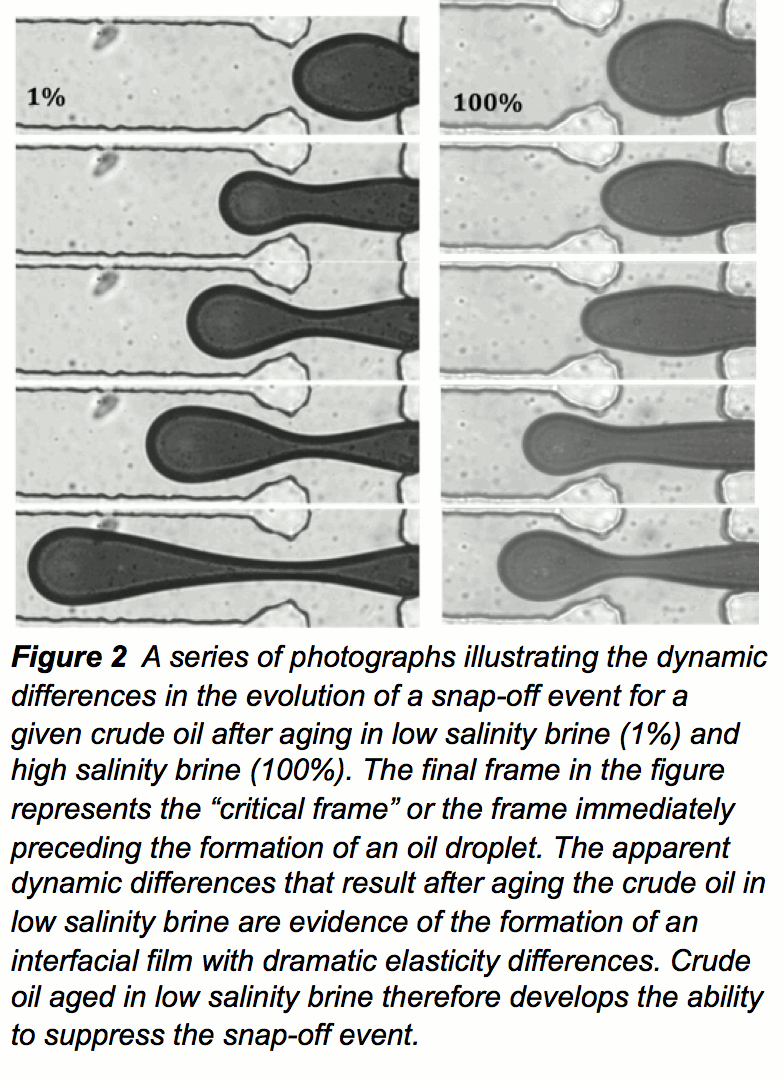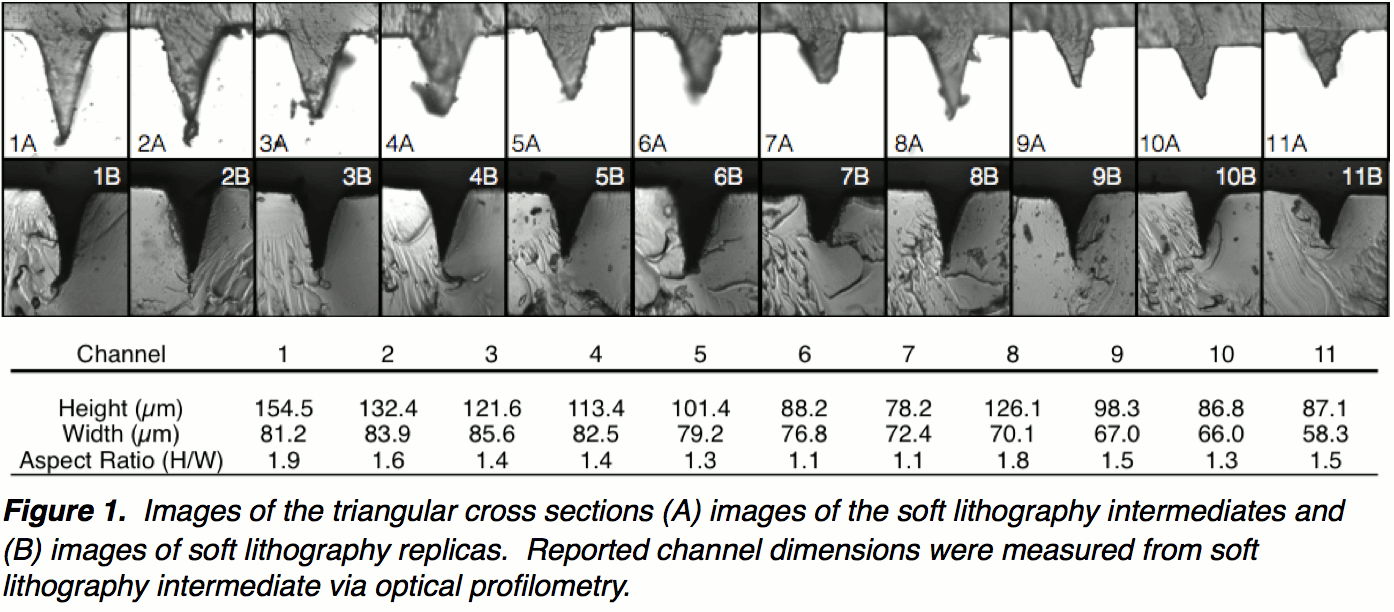Reports: DNI952923-DNI9: Direct Investigations of Enhanced Oil Recovery by Sequential Waterflooding with Microscale Models
John Oakey, PhD, University of Wyoming
Varying the cross-sectional geometry of microfluidic channels can dramatically alter fluid flow behavior, but most fabrication techniques are planar and therefore incapable of easily generating variations in depth. We have therefore developed femtosecond pulsed laser ablation-based fabrication to create microchannels with highly controlled triangular cross sectional geometry. Triangular cross sections are of particular interest because they more accurately represent the pore-throat occurring in sandstones and other sedimentary reservoirs. We have demonstrate that femtosecond pulsed laser ablation is an effective tool to reliably produce channels with triangular cross sections, which can be subsequently replicated to produce elastomeric microfluidic devices. Alternately, we have also developed a novel apparatus for the rapid thermal bonding of glass substrates for the creation of all-glass microfluidic devices. Our apparatus was designed to bong glass autonomously, in a small, self-contained, affordable instrument. Figure 1 displays a variety of triangular channels that were machined in glass and subsequently replicated to form microfluidic networks
The channels shown in Figure 1 were used as an experimental platform in which to observe two-phase flow and evaluate the capillary pressures required to initiate flow within triangular capillaries. Applying existing Mayer, Stowe and Princen (MS-P) theory, critical Òbreak throughÓ capillary pressures were predicted for varying cross sections and compared to experimental observations. Results indicate excellent correlation between the produced channels capillary pressures calculated by the MS-P method. The fabrication techniques and validation of predictive frameworks presented here provide a powerful approach to microfluidic experimental design for experimental multiphase flow. We have subsequently designed microscale hydrodynamic focusing networks to evaluate the effects of brine salinity upon emulsion drop "snap off". The geometry of these networks are precisely defined and therefore the interfacial forces are controlled and predictable. As shown in Figure 2, oil being drawn through a constriction at the channel junction is subjected to shear forces, which are balanced by surface tension and interfacial elasticity. The interfacial elasticity can be isolated and compared for brines of different salinity. Figure 2 also clearly shows the stark difference in oil snap off behavior when aged in high and low salinity brines. Other than the ionic strength of the brine, the oil, device geometry and flow conditions are identical. This experiment highlights the unconventional nature of the device platform that we have developed: instead of using micromodels that recapitulate the geometric properties and therefore complexity of reservoirs, we have introduced controlled geometries that isolate individual phenomena, allowing the problem of multiphase flow to be simplified.
Our flow focusing platform will next be applied to study the influence of different brine types (beyond concentration) in order to illuminate the molecular mechanisms of interfacial elasticity evolution. We will also utilize our micromachining technology to create pore-throat networks that isolate the effects of geometry on snap off during pore filling and drainage. These networks will be of varying depth and channel cross section, allowing for a rigorous comparison of geometric parameters, instead of settling for a fabrication-limited approximation.













